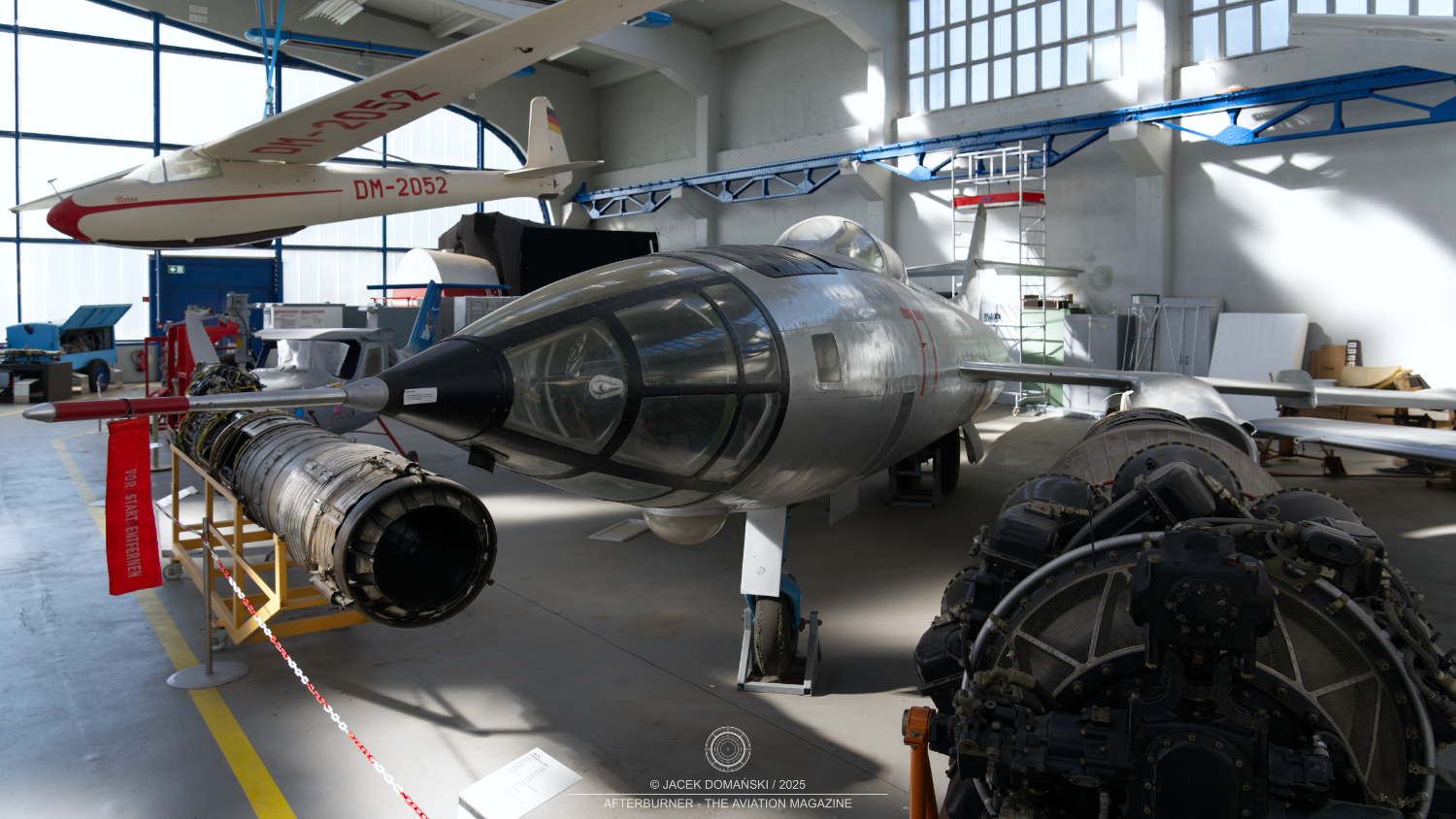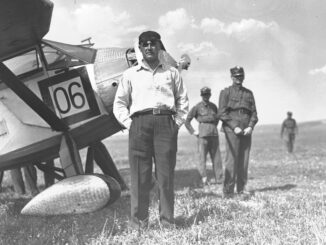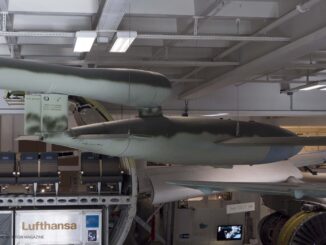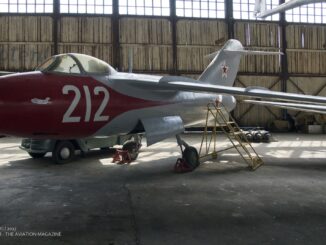 Yakovlev Yak-27R / Як-27Р, NATO reporting name “Mangrove” (c/n 477, formerly “0708” – “red 28” of the Soviet Air Force), exhibited at Technikmuseum “Hugo Junkers” in Dessau, August 2025.
Yakovlev Yak-27R / Як-27Р, NATO reporting name “Mangrove” (c/n 477, formerly “0708” – “red 28” of the Soviet Air Force), exhibited at Technikmuseum “Hugo Junkers” in Dessau, August 2025.
In the early 1950s, the Soviet authorities sought to meet the need for a modern long-range, high-altitude interceptor fighter to protect the northern and eastern territories of the Soviet Union.
This clearly defined role influenced the design of the aircraft developed by the Yakovlev Design Bureau. The fighter, initially designated Yak-120 but later renamed Yak-25 (NATO reporting name “Flashlight”), made its maiden flight in June 1952.
The Yak-25 was powered by two Mikulin AM-5 turbojet engines mounted under the wings. This made it possible to equip the aircraft with a powerful nose-mounted radar system – initially the RP-1D “Изумруд” (Emerald), which was later replaced by the RP-6 “Сокол” (Falcon). Considerable attention was paid to maximising fuel capacity and ensuring effective de-icing. The Yak-25 had a two-man crew, a pilot and a radar intercept operator.
The version equipped with the RP-6, designated the Yak-25M, was the most widely produced variant, with 406 examples built. It also formed the basis for the development of its successor, designated the Yak-27 (NATO reporting name “Flashlight-C”).
Shortly after the Yak-25 entered operational service, the Soviet Air Force discovered that its subsonic performance could not keep pace with the new generation of NATO strategic bombers. It soon became clear that the country’s air defence urgently needed a much faster, high-altitude interceptor.
The prototype of the new two-seat fighter aircraft, designated Yak-121, was built in December 1955. While retaining the general silhouette of the Yak-25, the aeroplane featured improved aerodynamics and thinner wings. During factory tests, the Yak-27 reached a speed of Mach 1.25, which was sufficient to approve it for serial production, even before the prototype evaluation programme was completed.
In 1956, an upgraded variant was developed. It was equipped with two Tumansky RD-9F turbojet engines, new strengthened wings, and improved horizontal and vertical stabilisers.
However, by then the Soviet Air Force was no longer interested in Yakovlev’s high-altitude interceptors. The Yak-25/27 concept was outclassed by the Sukhoi Su-9 supersonic fighter (NATO reporting name “Fishpot”), which made its maiden flight on 24th June 1956 and soon became the new standard aircraft of the Soviet Air Defence Forces.
Consequently, the Yak-27R was redeveloped as a tactical reconnaissance platform (NATO reporting name “Mangrove”) to replace the ageing fleet of Ilyushin Il-28 jets. The Yak-27R entered operational service in 1960, but it soon became apparent that its speed and altitude were insufficient to evade modern anti-aircraft missiles. Consequently, the Yak-27R remained in service for only about a decade, acting as a temporary solution until it was replaced by the next generation of reconnaissance aircraft, the Yak-28R and MiG-25R.
Production of the Yak-27R ended in 1962, with a total of between 165 and 180 aircraft built, depending on the source. Reportedly, as many as sixteen production series were manufactured, each differing in some construction details.
The aircraft featured in our Photo of the Week series once served with the Soviet Air Force in former East Germany, specifically with 11-й отдельный разведывательный авиационный полк (the 11th Independent Reconnaissance Aviation Regiment) and 931-й отдельный гвардейский разведывательный авиационный полк (the 931st Independent Guards Reconnaissance Aviation Regiment). Following the end of the Cold War, the Yak-27R initially formed a part of the aircraft collection at Wünsdorf Air Force Base, then was transferred to another aviation museum and finally found the new home at Technikmuseum “Hugo Junkers” in Dessau, where our photo was taken.



